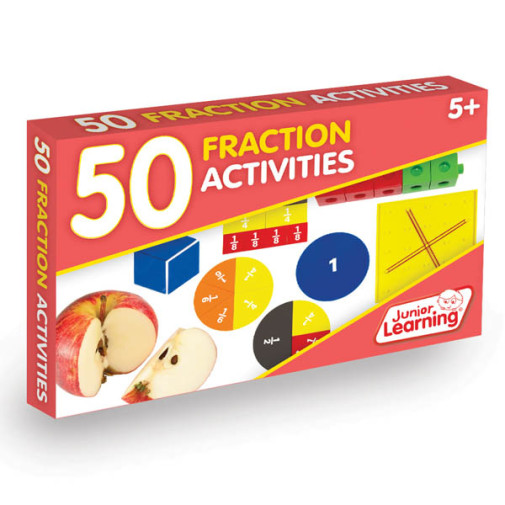We use cookies to make your experience better. To comply with the new e-Privacy directive, we need to ask for your consent to set the cookies. Learn more.
50 Fraction Activities
50 Fraction Activities is a set of 50 double-sided activity cards for teaching fraction knowledge and understanding. Topics include: equivalent fractions, comparing fractions, fractions of a set, simple division, adding fractions, subtracting fractions, simplifying fractions, improper fractions, multiplying fractions, dividing fractions, common denominator, mixed numerals and decimal fractions. The front side provides teaching objectives, resources used and procedure. The other side provides visual examples. Math manipulatives used effectively throughout and presented in clear photography. Contains 50 double-sided activity cards and a contents card that can act as a check off list.
These activity cards (4.5x7") with colorful borders and rounded corners provide activities to accompany a variety of math manipulatives. Cards are numbered and an extra card has a checklist to track progress. One side lists scripted instructions and lesson objectives, resources needed and step-by-step instructions. Here is an example for the Place Value Activities card #1: the objective is 2 digit place value, resources include your environment (walk outside), the procedure is to 1-Draw student's attention to numbers around you, 2-On a walk, ask students to look for and point out two digit numbers, 3-How many tens are in each number?; 4-What would it be if you added 30 more?, and 5-What if you took away 10? The other side of the card is what you show students. This one has a group of school-age children wearing backpacks and holding hands out in front walking to school. You also see a speed sign (20) and a mail box with a house number on it (12.) These have a charming European look. These cards allow you to focus activities on a certain concept and use manipulatives that focus on that particular skill. In the deck of Place Value Activities some of the resources needed include an abacus, dice, playing cards, place value flips, 10-sided dice, a calculator, newspapers, play dough, shopping receipts. If you have a student who likes practice math out-of-the-book, these could be a fun option. ~ Sara
| Product Format: | Other |
|---|---|
| Brand: | Junior Learning |
| Grades: | 2-4 |
| EAN/UPC: | 858136006218 |
| Length in Inches: | 4.625 |
| Width in Inches: | 7.1875 |
| Height in Inches: | 0.75 |
| Weight in Pounds: | 0.9 |

